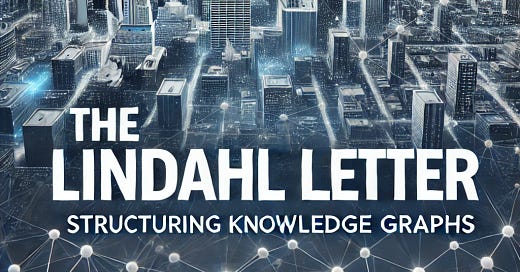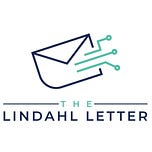You never really have to worry about how you store knowledge. All that knowledge just gets accumulated day by day and how it is stored, structured, and even retrieved happens without any intervention. It’s just something that you do autonomously. That is very different when you have to manage all that data and store it. Navigating the intricate maze of data science, structuring really large knowledge graphs presents itself as both an art and a science. This endeavor, crucial for deepening our understanding and utilization of complex datasets, entails a series of pivotal steps and considerations. Today, we'll explore the foundational principles and practical strategies for effectively structuring these expansive networks of interconnected information, while drawing on the organizational wisdom of traditional knowledge structures like the Dewey Decimal System (DDS).
Understanding the basics seems to take more and more time these days. Knowledge graphs are more than mere data structures; they represent information through a web of entities and their interrelations. They offer a robust framework for integrating data from a multitude of sources, enhancing our ability to derive richer insights and make more informed decisions. As the size of the knowledge graph expands, so too does the complexity of structuring it effectively.
Key Components of Knowledge Graphs
1. Nodes and Edges: At the heart of any knowledge graph are nodes (entities) and edges (relationships). Nodes can embody concepts, objects, or events, while edges illustrate the interconnections among these nodes. The quality and comprehensiveness of your knowledge graph hinge on the precise definition and linking of these elements. You deal with these types of relationships every day without even an afterthought. The types of things you manage passively are more complex when they have to be handled in a planful way.
2. Ontology: This serves as the schema or structural framework that delineates the types of entities and relationships within the graph. A well-crafted ontology ensures consistency and coherence, enabling more effective querying and analysis. I’m actually a fan of declaring things as a fact or not a fact and then storing those facts in buckets that are easy to retrieve.
3. Data Ingestion and Integration: Large knowledge graphs often amalgamate data from various sources. Efficiently integrating this data while preserving its integrity and relevance is a critical challenge, involving data cleaning, normalization, and transformation.
Knowledge Structures and the Dewey Decimal System
Drawing inspiration from the Dewey Decimal System can provide valuable insights into structuring knowledge graphs. The DDS organizes information into a hierarchical, decimal-based classification system, which can serve as a model for categorizing and indexing data within a knowledge graph.
1. Hierarchical Classification: Like the DDS, hierarchical classification in a knowledge graph helps organize information into broad categories and narrower subcategories. This ensures that related entities are grouped together, facilitating easier navigation and retrieval.
2. Decimal Notation: Utilizing a decimal notation system to categorize entities and relationships can add a layer of precision and order to a knowledge graph. Each node and edge can be assigned a unique identifier, akin to how books are classified in libraries.
3. Subject Headings: Implementing subject headings, similar to those in the DDS, can aid in tagging and describing nodes with relevant keywords. This enhances the searchability and contextual understanding of the graph.
Strategies for Structuring Large Knowledge Graphs
1. Scalability: Ensure your infrastructure can handle the increasing volume of data. This often involves distributed computing and storage solutions, such as cloud-based platforms that can scale horizontally.
2. Data Modeling: Design your data model with future growth in mind. Anticipate new types of entities and relationships, ensuring that the graph can evolve without significant restructuring.
3. Indexing and Partitioning: Use indexing to speed up queries and improve performance. Partitioning the graph into manageable sub-graphs can also enhance efficiency, especially when dealing with very large datasets.
4. Query Optimization: Develop efficient query strategies to handle complex searches. This might involve using specialized query languages like SPARQL or leveraging graph database technologies that support high-performance querying.
5. Visualization and Interaction: For large knowledge graphs, visualization tools are invaluable. They help in understanding the structure and relationships within the graph, making it easier to navigate and extract insights.
Tools and Technologies
Several technologies and tools are pivotal in constructing and managing large knowledge graphs:
1. Graph Databases: Neo4j, Amazon Neptune, and ArangoDB are designed to handle large-scale knowledge graphs, offering robust querying capabilities and efficient management of complex relationships.
2. Data Integration Tools: Tools like Apache NiFi and Talend facilitate seamless ingestion and integration of data from various sources into your knowledge graph.
3. Ontology Management: Protégé and TopBraid Composer are popular tools for creating and managing ontologies, ensuring your knowledge graph has a solid structural foundation [1].
Conclusion
Structuring really large knowledge graphs is a multifaceted challenge that requires careful planning, robust technology, and a strategic approach to data integration and management. By focusing on scalability, data modeling, and efficient querying, and drawing inspiration from traditional knowledge structures like the Dewey Decimal System, we can harness the full potential of knowledge graphs to drive innovation and insight across various fields. As we continue to refine these processes, the power and utility of knowledge graphs will only grow, unlocking new opportunities for understanding and leveraging the vast sea of data that defines our world.
In the spirit of continuous improvement and adaptation, our journey with knowledge graphs reflects the age-old pursuit of knowledge itself—ever-evolving, always striving for greater understanding.
Footnotes:
[1] https://protege.stanford.edu/
What’s next for The Lindahl Letter?
Week 162: Indexing facts vs. graphing knowledge
Week 163: Self-Supervised Learning
Week 164: Graph-Based Feature Engineering
Week 165: Federated Feature Engineering
Week 166: Explainable Feature Engineering
If you enjoyed this content, then please take a moment and share it with a friend. If you are new to The Lindahl Letter, then please consider subscribing. Stay curious, stay informed, and enjoy the week ahead!






Share this post